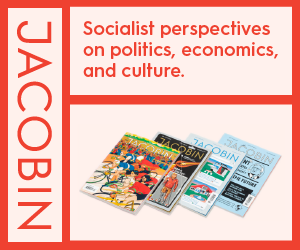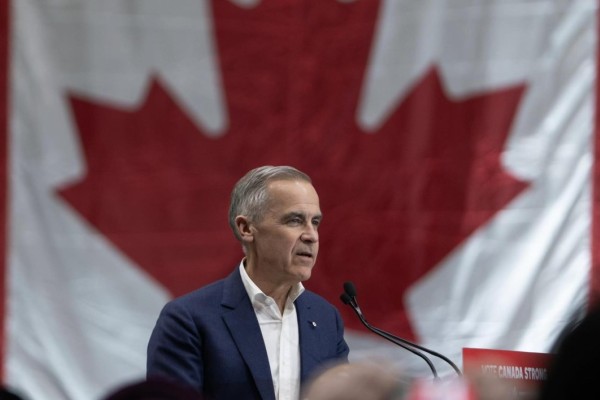Economic power to the people!

Photo by Jose Luis Magana
I want to inaugurate this new column by harkening back to something old. I recently came across a pamphlet first published in 1943 by the heterodox economist Joan Robinson titled The Problem of Full Employment.
I find it hard to contain my anger against those who have stirred hatred on trash-radio broadcasts and in the mainstream media. And those who have done so for their own political purposes bear considerable responsibility for the climate of intolerance that they helped to create.
Sadly little known today, Robinson was a radical, defiantly outside the mainstream. She engaged the orthodoxy of her day in fiery debates, defending the core belief that the free-market profit system was no way to organize the economy and society. In this, Robinson was very much like the Marxist economists of her day, although she was explicit that she was not a Marxist. Marx too affirmed that he was no Marxist — meaning that he didn’t want his work to be turned into a wooden dogma. It was in this spirit that Robinson punched through the façade of bourgeois economics — a science written from the perspective of capitalism’s victors — with sharpness and clarity.
Her slim 1943 pamphlet is so refreshing to read even today because it is written from the other perspective: that of workers. It offers a vision of an economy realigned to serve the interests of the social majority. And, just as importantly, it is a pedagogical tool for workers to better understand how the current economy doesn’t work in their favour. Today, we need to put these two elements, the popular sweeping vision and the commitment to popular education, back at the heart of our economic alternative.
Robinson is explicit in rejecting half-measures: “Any scheme of partial planning which does not abolish private enterprise will run into difficulties as soon as it succeeds in overcoming unemployment. It is not a simple matter to remove unemployment and leave everything else the same, for unemployment has a definite function in the capitalist system.” The word planning — a conscious, democratic direction of the economy to the benefit of all, not the wealthy few — appears throughout the text.
Of course, the 21st century demands a new vision in its details, but the grand sweep of possible transformation would be a welcome throwback.
As social democratic politics has shifted rightwards, so has its economic vision tended towards policy minutiae. Transforming has given way to the much more modest “nudging.” But nudging doesn’t create constituencies for social change; it works to police individuals, not build communities. This politics has ended up alienating working class voters, pushing politics ever rightward.
Meanwhile, the economic world is being transformed. Information technology, just-in-time production, global supply chains, the logistics revolution and rampant financialization have again left workers as precarious as those of pre-war generations — and also traumatized, to use former Fed chairman Alan Greenspan’s language.
But these changes also open up new possibilities. We used to debate who ought to reap the gains of technology. Productivity up 25 per cent? We could work 30 hours a week for the same pay. Today it seems like we take it for granted that shareholders will be the beneficiaries and we’ll all be left working 40-plus hours, skipping vacations and in debt struggling to cover rent or childcare or tuition — all of which should be a basic human right by now.
When Bill Gates proposes a robot tax, the media think-pieces fall like cherry blossom petals after a spring storm — and they are about as substantial! Instead of a tax on robots, let’s talk instead about the more fundamental issues. Who owns the robots? Who gets to share in the productivity improvements they create? Can we plan which robots do what or which robots we should be building and why?
This means a vision and a strategy for how to actually socialize investment: to take the decision-making from the hedge-fund and pension-fund managers and give it to the people, spreading democracy to the economic sphere.
The road to such an updated and enlarged Left vision for the economy passes through popular education. It requires confidence in the intelligence of every one of us, white or blue collar: vacuuming the office or populating the spreadsheets, staffing the call centre or the warehouse. Take the campaign for a $15 minimum wage: it has a narrow policy goal but one that can’t be met without engaging the bigger issues. If we want to talk about higher wages, we can’t be afraid to talk about a smaller profit share. Not because the economy is zero-sum, but because our long-term aim should go beyond the redistribution of things to the redistribution of power over decision-making.
Questions of control and decision-making, the kinds of big questions Joan Robinson raised back in 1943, should be front and centre. A belief in democracy that extends to the economy and a readiness to popularize Left economics — that’s my starting point for Left economics and for this new CD column.
Michal Rozworski is a union researcher and writer. One of Canada’s leading young Left economists, he blogs at Political Eh-conomy.
This article appeared in the Spring 2017 issue of Canadian Dimension (Fight for $15).










_(I0058208)_600_400_90_s_c1.jpg)